 Hitachi has announced that it will ramp up its output of consumer hard drives this year as it strives to take advantage of the soaring storage demands of MP3, PVR and mobile phone markets.
Hitachi has announced that it will ramp up its output of consumer hard drives this year as it strives to take advantage of the soaring storage demands of MP3, PVR and mobile phone markets.
The move, in response to faltering enterprise demand, will see Hitachi target three key consumer segments – MP3/personal media players, digital video recorders and mobile phones.
As part of its strategy for the consumer market in 2005, Hitachi will open five Hitachi Design Studios worldwide, each one specialising in helping partners to integrate hard drives into consumer electronic devices.
The new centres – called the Hitachi Design Studios – will be scattered all over the globe (Fujisawa, Japan; Havant, UK; Rochester, Minnesota; Shenzhen, China and Taipei, Taiwan) and will open for business in April.
Hitachi intends to thrash their workers to an inch of their lives and get them to treble their output of 1.8-inch drives (used in Dell DJ music players), and double the production of 1-inch drives, as used in Apple’s iPod mini.
 A smaller version of the current 1-inch drive, code-named Mikey, comes out later this year, with capacious 2.5-inch drives – holding up to 500GB – being targeted at makers of DVRs and home servers.
A smaller version of the current 1-inch drive, code-named Mikey, comes out later this year, with capacious 2.5-inch drives – holding up to 500GB – being targeted at makers of DVRs and home servers.
Hitachi, the world’s second-largest maker of hard disk drives after Seagate, shipped 1.3 million 1.8-inch drives and 3.9 million 1-inch drives in 2004, although posted an operating loss of 4.4 billion yen (US$42.08m/€32.06m/£22.02m) in calendar 2004, after being battered by sharp price declines.
“Hitachi`s strength in hard drives provides a strong basis from which to accelerate our CE [consumer electronics] business in 2005,” said Bill Healy, senior vice president, product strategy and marketing, Hitachi Global Storage Technologies.
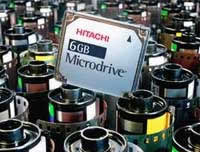 “Hitachi’s intensified focus in the CE segment hard drive will mean good news for end-users as we work on developing smaller, high-capacity hard drives that are more rugged, require less power and cost less.”
“Hitachi’s intensified focus in the CE segment hard drive will mean good news for end-users as we work on developing smaller, high-capacity hard drives that are more rugged, require less power and cost less.”
Hitachi’s promise of churning out smaller, cheaper, more capacious hard drives may impact on a whole host of consumer electronic devices, with its high capacity drives offering bags more storage space for video/DVD convergence units.
 TowerStream, a US provider of fixed-wireless broadband services has announced the successful completion of Mobile Voice over IP (VoIP) over a WiFi network.
TowerStream, a US provider of fixed-wireless broadband services has announced the successful completion of Mobile Voice over IP (VoIP) over a WiFi network. Congratulations to Bernard Herbert of Belgium, as he has won the Skype-friendly Siemens USB adaptor and Handset combo in our recent readers competition. When we spoke to Bernard, via Skype of course, he was delighted, “It’s going to be of help every day,” he enthused. It’s currently not available in Belgium, so Bernard will have a one-off.
Congratulations to Bernard Herbert of Belgium, as he has won the Skype-friendly Siemens USB adaptor and Handset combo in our recent readers competition. When we spoke to Bernard, via Skype of course, he was delighted, “It’s going to be of help every day,” he enthused. It’s currently not available in Belgium, so Bernard will have a one-off.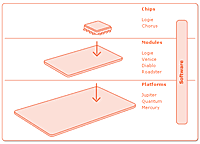 Frontier Silicon, the British company that makes chips for mobile digital television and digital radio products, has completed it US$28 million (€21m/£14.5m) investment round funding.
Frontier Silicon, the British company that makes chips for mobile digital television and digital radio products, has completed it US$28 million (€21m/£14.5m) investment round funding. “This latest investment allows us to aggressively target and drive market share in the emerging mobile digital television market in the same way that we have established our chips in over 70 percent of DAB digital radios,” said Anthony Sethill.
“This latest investment allows us to aggressively target and drive market share in the emerging mobile digital television market in the same way that we have established our chips in over 70 percent of DAB digital radios,” said Anthony Sethill. When Sony start slapping the world famous Walkman mobile music brand on their products, you know that they mean business, and their new Sony Ericsson W800 has been proudly trumpeted as the first mobile phone to combine a high-quality digital music player and a 2 Megapixel camera.
When Sony start slapping the world famous Walkman mobile music brand on their products, you know that they mean business, and their new Sony Ericsson W800 has been proudly trumpeted as the first mobile phone to combine a high-quality digital music player and a 2 Megapixel camera.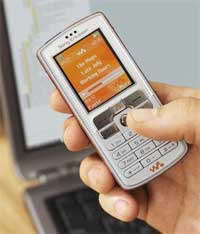 Sadly, we’re going to have to wait a while before we can start adjusting our lifestyle behaviour – the release of the Sony Ericsson W800 is not scheduled until the third quarter of 2005
Sadly, we’re going to have to wait a while before we can start adjusting our lifestyle behaviour – the release of the Sony Ericsson W800 is not scheduled until the third quarter of 2005 Microsoft is teaming up with one of Japan’s hotshot video game developers to create games for its next-generation video game console, XBox2 – a sure-fire sign that it’s determined to grab a fat slice of the Japanese market.
Microsoft is teaming up with one of Japan’s hotshot video game developers to create games for its next-generation video game console, XBox2 – a sure-fire sign that it’s determined to grab a fat slice of the Japanese market.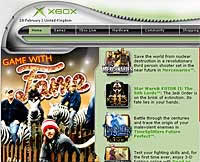 A founding member of former video game software developer Square Co., the 42-year-old is famed for creating the role-playing series, ‘Final Fantasy’, which has shifted more than 60 million copies to date.
A founding member of former video game software developer Square Co., the 42-year-old is famed for creating the role-playing series, ‘Final Fantasy’, which has shifted more than 60 million copies to date.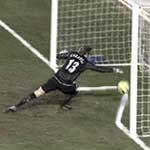 The International Football Association Board has agreed to trial microchip technology, which can determine whether a ball has crossed the goal line.
The International Football Association Board has agreed to trial microchip technology, which can determine whether a ball has crossed the goal line. Jens of Sweden has unveiled its latest cool digital music player which they reckon will give iPod Shuffle a run for its money.
Jens of Sweden has unveiled its latest cool digital music player which they reckon will give iPod Shuffle a run for its money. Rumours pointing at Apple as a potential bidder for TiVo have given the digital video recorder company’s shares a healthy boost – and got people wondering whether the deal would be a good fit.
Rumours pointing at Apple as a potential bidder for TiVo have given the digital video recorder company’s shares a healthy boost – and got people wondering whether the deal would be a good fit. Nearly every media and technology company is aiming at the living room now, either with Media Centre-style PCs or other digital hubs to spread content such as video and music around the home.
Nearly every media and technology company is aiming at the living room now, either with Media Centre-style PCs or other digital hubs to spread content such as video and music around the home.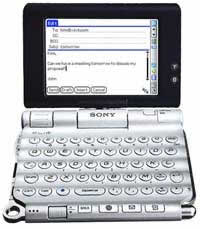 Sony has announced that it is to end production on its Clie line of PDAs in Japan.
Sony has announced that it is to end production on its Clie line of PDAs in Japan. Our guess is that they’re going to focus their energies on ramping up the feature list on Sony Ericsson smartphones, developing the PlayStation Portable and finally producing the iPod killer they so desperately need.
Our guess is that they’re going to focus their energies on ramping up the feature list on Sony Ericsson smartphones, developing the PlayStation Portable and finally producing the iPod killer they so desperately need.